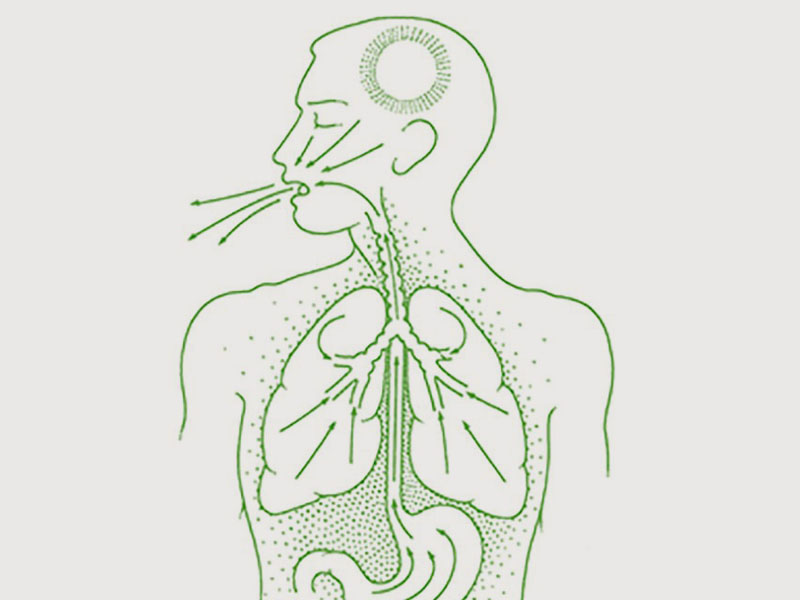Vamana (Therapeutic Vomiting): A Cleansing Ayurvedic Treatment for Health and Vitality

In Ayurveda, the holistic system of healing that has been practiced for thousands of years, there are several detoxification and purification techniques designed to balance the body’s doshas (energies) and promote overall health. One such technique is Vamana, or therapeutic vomiting, which is used to eliminate excess kapha, the dosha associated with mucus, phlegm, and congestion. The purpose of Vamana is to detoxify the body, cleanse the upper respiratory tract, and rejuvenate the digestive system.
Vamana is considered to be a potent and effective treatment, particularly for individuals suffering from kapha imbalances such as respiratory conditions (like asthma and bronchitis), digestive issues (like indigestion or bloating), and conditions caused by excess mucus in the body. Although this treatment has proven benefits, it is important to approach it under professional supervision, as it requires careful monitoring and proper preparation.
Understanding Vamana in Ayurveda
In Ayurvedic medicine, the three doshas—Vata, Pitta, and Kapha—represent the basic energies that govern the functions of the body. Kapha is primarily responsible for stability, lubrication, and moisture in the body, but when it becomes excessive, it leads to imbalances that can cause a variety of symptoms, such as weight gain, sluggish digestion, mucus buildup, and respiratory congestion.
Vamana is a purification technique primarily used to address excess kapha, helping to restore balance and promote overall health. It is often performed as part of a larger detoxification process known as Panchakarma, which involves five therapeutic actions to cleanse the body of toxins and rejuvenate the system.
The Process of Vamana (Therapeutic Vomiting)

Vamana is typically performed under the supervision of an experienced Ayurvedic practitioner, who will first assess the individual’s health and determine whether the treatment is appropriate. The process involves the use of specific medicinal herbs, liquids, and techniques to induce vomiting in a controlled and therapeutic manner.
Steps of the Vamana Process:
- Preparation:
- Before the actual treatment, the individual undergoes preparatory steps, including oleation (application of oils to the body) and sweating (through steam baths or sweating therapies). These steps help loosen the accumulated kapha and prepare the body for the purgation process.
- Administration of Medicinal Liquids:
- The Ayurvedic practitioner administers a combination of medicinal herbs, honey, ghee, and warm liquids that are designed to loosen and liquefy the excess mucus in the respiratory and digestive systems. These substances are tailored to the individual’s specific constitution and needs.
- Induction of Vomiting:
- After the liquids have been ingested, the practitioner uses gentle techniques to stimulate vomiting, which helps expel the toxins and excess mucus from the body. Vomiting is done in a controlled manner to avoid any discomfort or harm to the individual.
- Post-Treatment Care:
- After the vomiting process, the individual is given soothing herbs and liquids to restore balance to the digestive system and help the body recover. It is important to rest and hydrate following the treatment to allow the body to heal and regain strength.
Benefits of Vamana (Therapeutic Vomiting)
Vamana therapy offers several significant benefits, especially for individuals experiencing kapha imbalances or those with chronic conditions related to mucus buildup. Some of the key benefits include:
- Clearing Respiratory Congestion:
- Vamana is highly effective in clearing the respiratory tract of excess mucus and phlegm, making it beneficial for individuals with respiratory conditions such as asthma, bronchitis, sinusitis, and chronic coughs. The induced vomiting helps expel the accumulated toxins and mucus, promoting clearer breathing and better lung function.
- Detoxification:
- The process of vomiting helps the body eliminate toxins (ama) that have accumulated in the digestive and respiratory systems. This purification process helps rejuvenate the body, improve digestion, and enhance overall vitality.
- Improved Digestion:
- Vamana helps cleanse the digestive system, promoting better absorption of nutrients and improving overall digestive health. It can be particularly beneficial for individuals with slow digestion, bloating, or indigestion, as it helps remove blockages and enhances metabolic function.
- Weight Loss:
- By expelling excess kapha, Vamana can help reduce excess body weight caused by fluid retention and sluggish metabolism. It helps boost the metabolism and promotes a more efficient fat-burning process.
- Mental Clarity and Emotional Balance:
- Excess kapha can lead to feelings of heaviness, lethargy, and mental fog. By clearing the body of toxins and balancing the doshas, Vamana helps restore mental clarity, focus, and emotional stability. This can also promote a sense of lightness and improved mood.
- Strengthened Immune System:
- By removing excess mucus and toxins, Vamana helps boost the immune system. It aids in clearing the body’s channels and strengthens its natural defenses against infections and disease.
Precautions and Care to Take
While Vamana is a potent therapeutic tool, it should be approached with caution. It is essential to follow proper guidelines and ensure the treatment is performed by a qualified Ayurvedic practitioner. Here are some important precautions and considerations:
- Consultation with a Professional:
- Vamana should only be performed under the supervision of a trained and experienced Ayurvedic practitioner who can assess the individual’s health condition and ensure that the treatment is appropriate.
- Preparation and Post-Treatment Care:
- Proper preparation and post-treatment care are crucial for the effectiveness of Vamana. The body needs to be prepared through the use of oleation and sweating therapies, and adequate hydration and rest are necessary following the procedure.
- Avoid in Certain Health Conditions:
- Vamana is not recommended for individuals with severe heart conditions, acute infections, or certain types of digestive disorders. It is also not suitable for pregnant women or individuals who are severely dehydrated or malnourished.
- Potential Side Effects:
- Some individuals may experience mild discomfort, dizziness, or weakness after the treatment. It is important to take rest, drink plenty of fluids, and follow the advice of the Ayurvedic practitioner to restore balance.
Disadvantages and Risks
Although Vamana therapy offers many benefits, it is not without its risks. Some of the potential disadvantages or challenges include:
- Discomfort and Nausea:
- Inducing vomiting may cause some discomfort, nausea, or gagging. While this is part of the therapeutic process, it may be unpleasant for certain individuals.
- Risk of Dehydration:
- Since vomiting expels fluids from the body, there is a risk of dehydration if not managed properly. It is essential to hydrate adequately before, during, and after the treatment to prevent dehydration and maintain electrolyte balance.
- Not Suitable for Everyone:
- As mentioned earlier, Vamana is not suitable for people with certain health conditions, including severe digestive problems, heart disease, or acute infections. It should only be performed on individuals who are healthy enough to tolerate the treatment.
Who Should Avoid Vamana?
Vamana therapy is contraindicated for individuals who have the following conditions:
- Pregnancy: It is not recommended during pregnancy due to the strain it may place on the body.
- Severe Heart Disease: People with serious heart conditions should avoid Vamana as it may put excessive stress on the cardiovascular system.
- Acute Infections: Those with active infections or fever should not undergo Vamana until they have recovered.
- Severe Digestive Disorders: People with chronic digestive conditions, such as ulcers or irritable bowel syndrome (IBS), should not perform this treatment.
Conclusion
Vamana, or therapeutic vomiting, is an important Ayurvedic treatment designed to cleanse the body of excess kapha and toxins. It offers numerous health benefits, including improved respiratory health, enhanced digestion, detoxification, and mental clarity. However, it is essential to practice Vamana under the guidance of a qualified practitioner to ensure safety and effectiveness. If performed correctly, Vamana can be a powerful tool for restoring balance, promoting vitality, and improving overall well-being.
🌐 Discover more health tips and nutrition facts at cureforsure.com
📩 Contact Us: +91 9004980060
🌐 Join Our WhatsApp Channel: Click Here






















